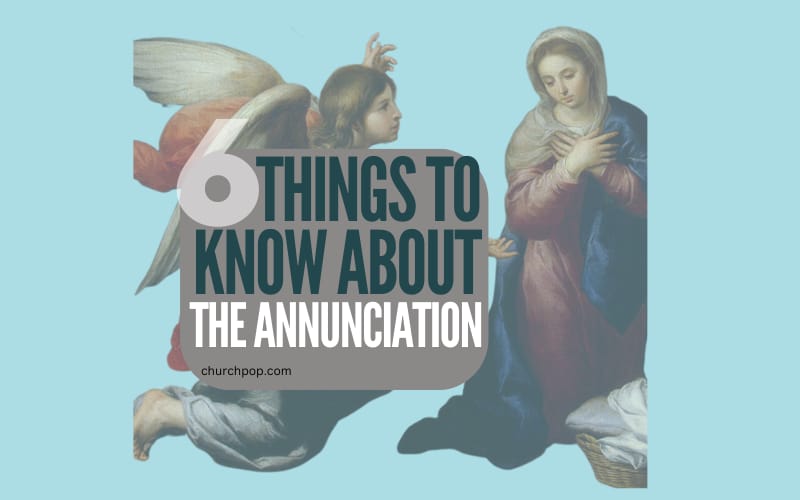Catholics celebrate The Solemnity of the Annunciation of Jesus Christ on March 25th.
Here are a few things to know and share about the Annunciation:
1) We celebrate Mary’s YES.
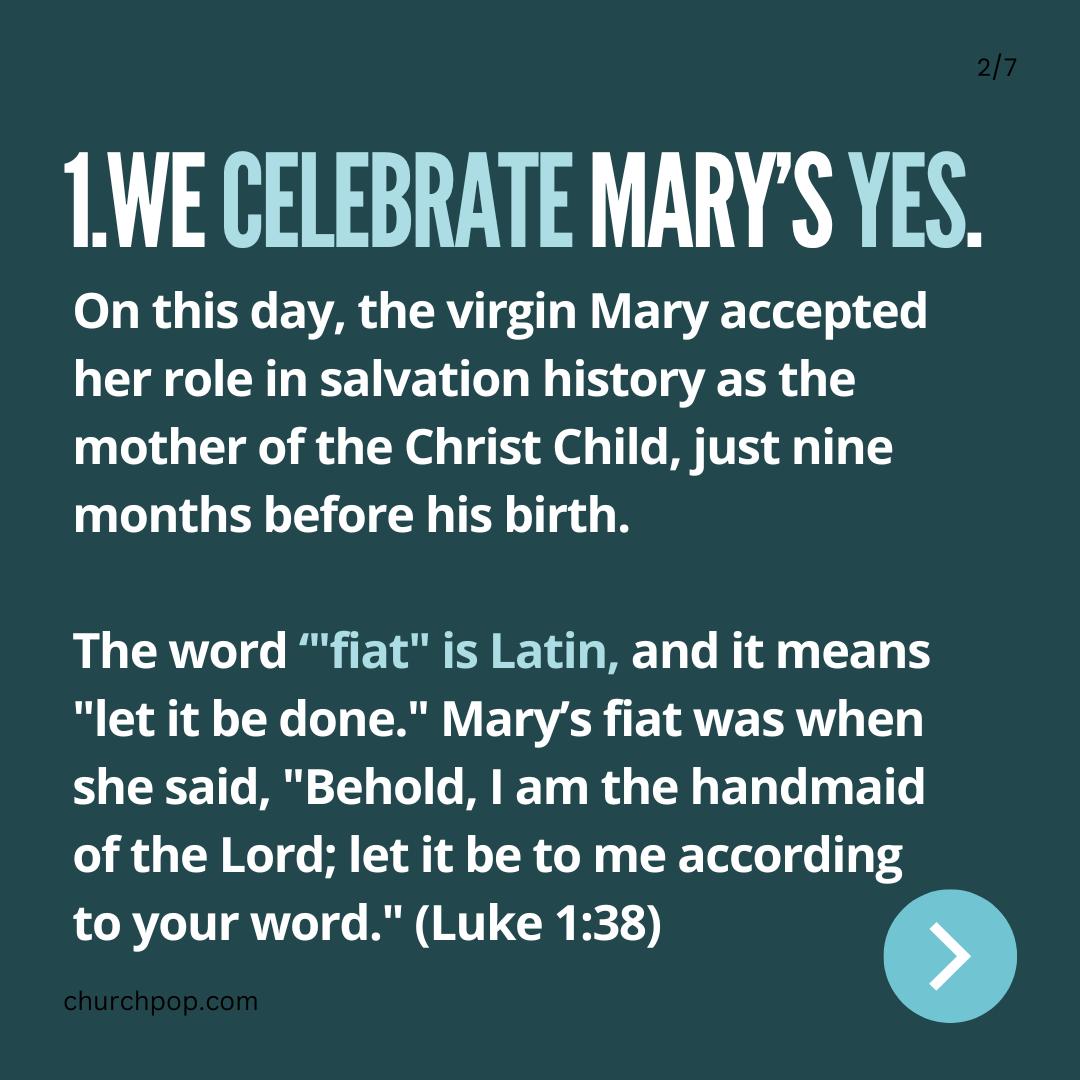
On this day, the virgin Mary accepted her role in salvation history as the mother of the Christ Child, just nine months before his birth.
According to EWTN, “The word ‘fiat’ is Latin, and it means ‘let it be done.’ Mary’s fiat was when she said, ‘Behold, I am the handmaid of the Lord; let it be to me according to your word.’ (Luke 1:38)”
2) We read about the Annunciation in scripture.
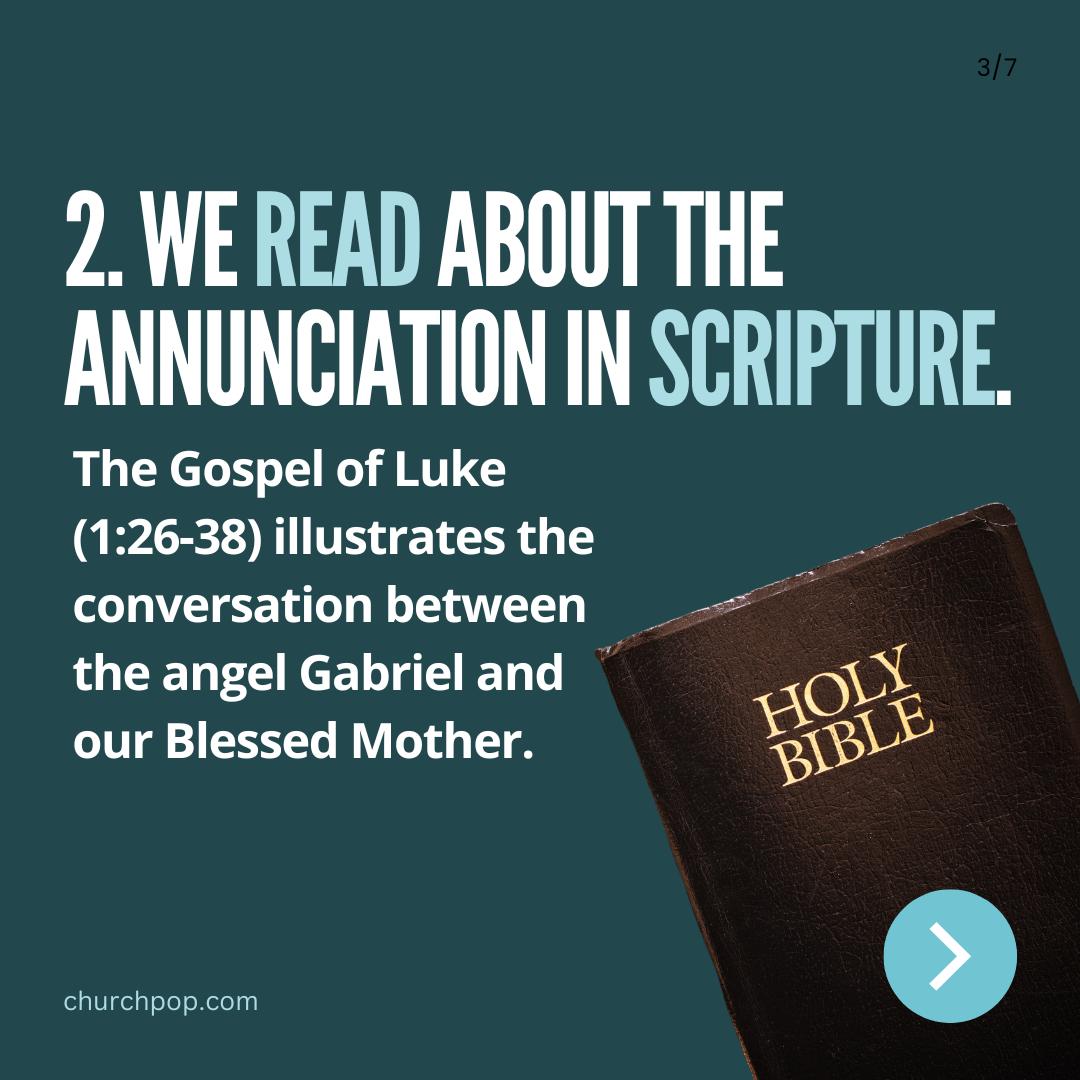
The Gospel of Luke (1:26-38) illustrates the conversation between the angel Gabriel and our Blessed Mother.
3) The feast may be moved or celebrated differently according to the liturgical calendar.
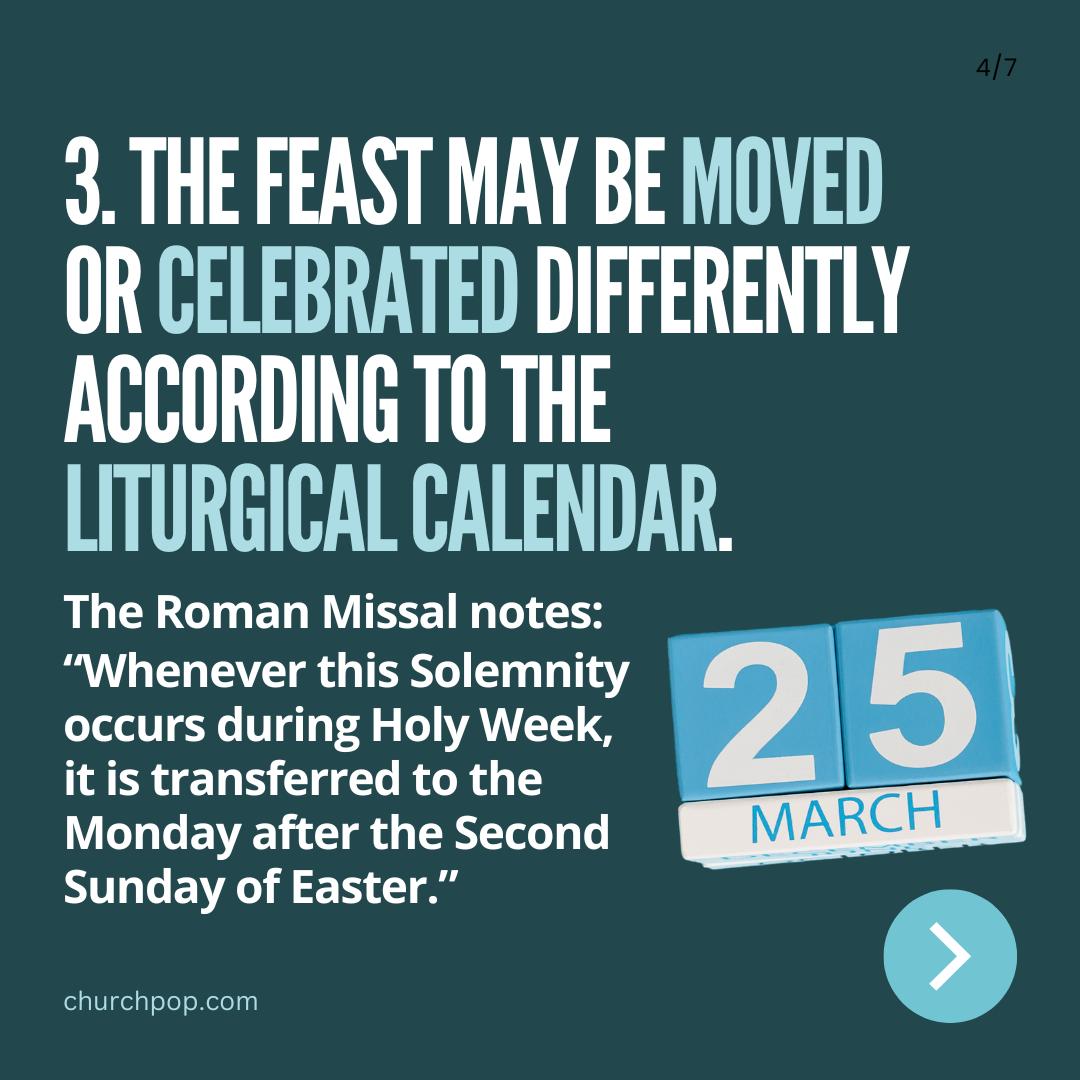
Because it is a Solemnity in the Church, when it falls during the season of Lent, our Lenten penance is lifted. If it falls during Holy Week, the Solemnity is moved.
The Roman Missal notes:
“Whenever this Solemnity occurs during Holy Week, it is transferred to the Monday after the Second Sunday of Easter.”
4) You can visit the location where the Annunciation occurred!
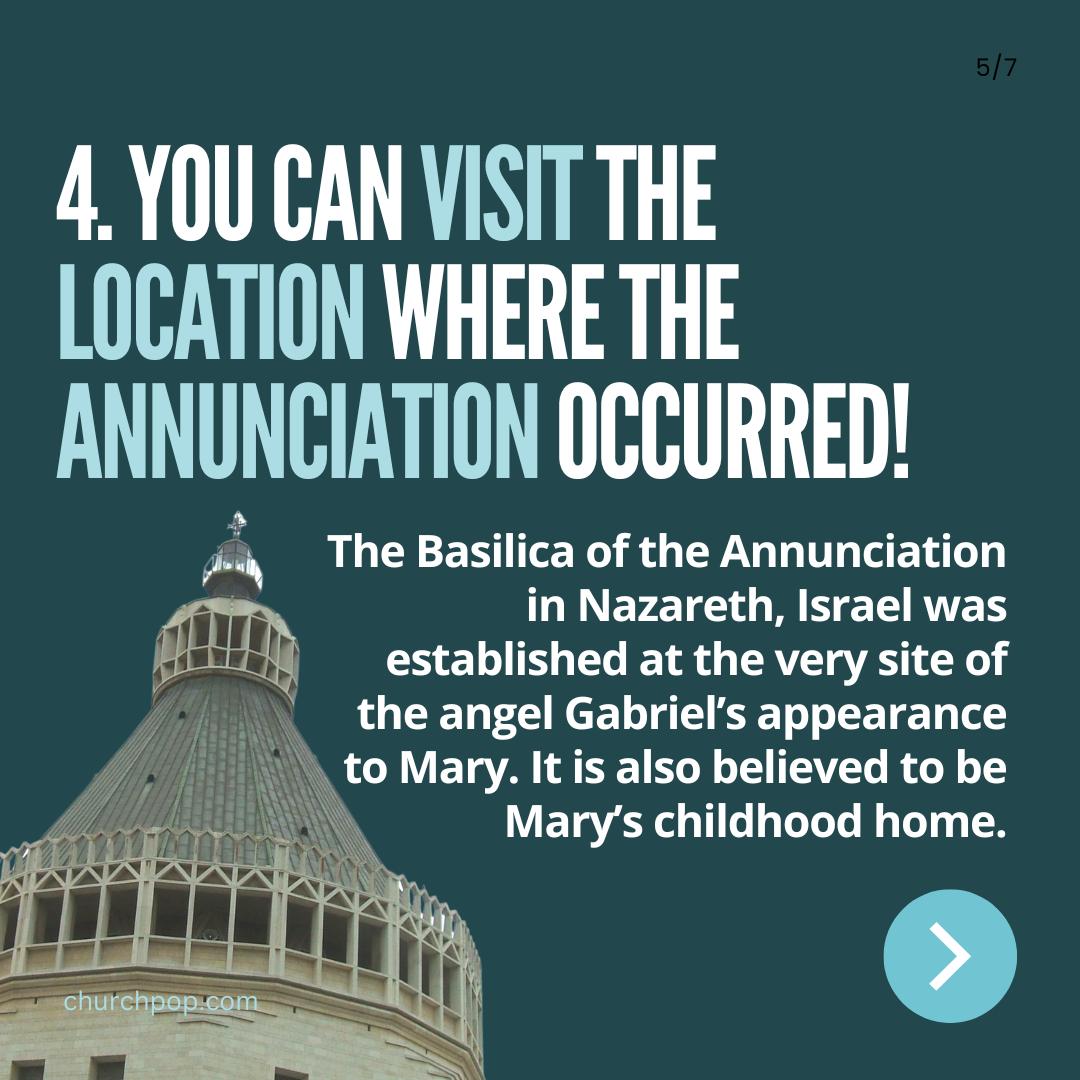
According to ChurchPOP English editor Jacqueline Burkepile’s previous reporting, “…the Basilica of the Annunciation in Nazareth, Israel was established at the very site of the angel Gabriel’s appearance to Mary. It is also believed to be Mary’s childhood home.”
5) The Annunciation is explained in the Catechism of the Catholic Church.
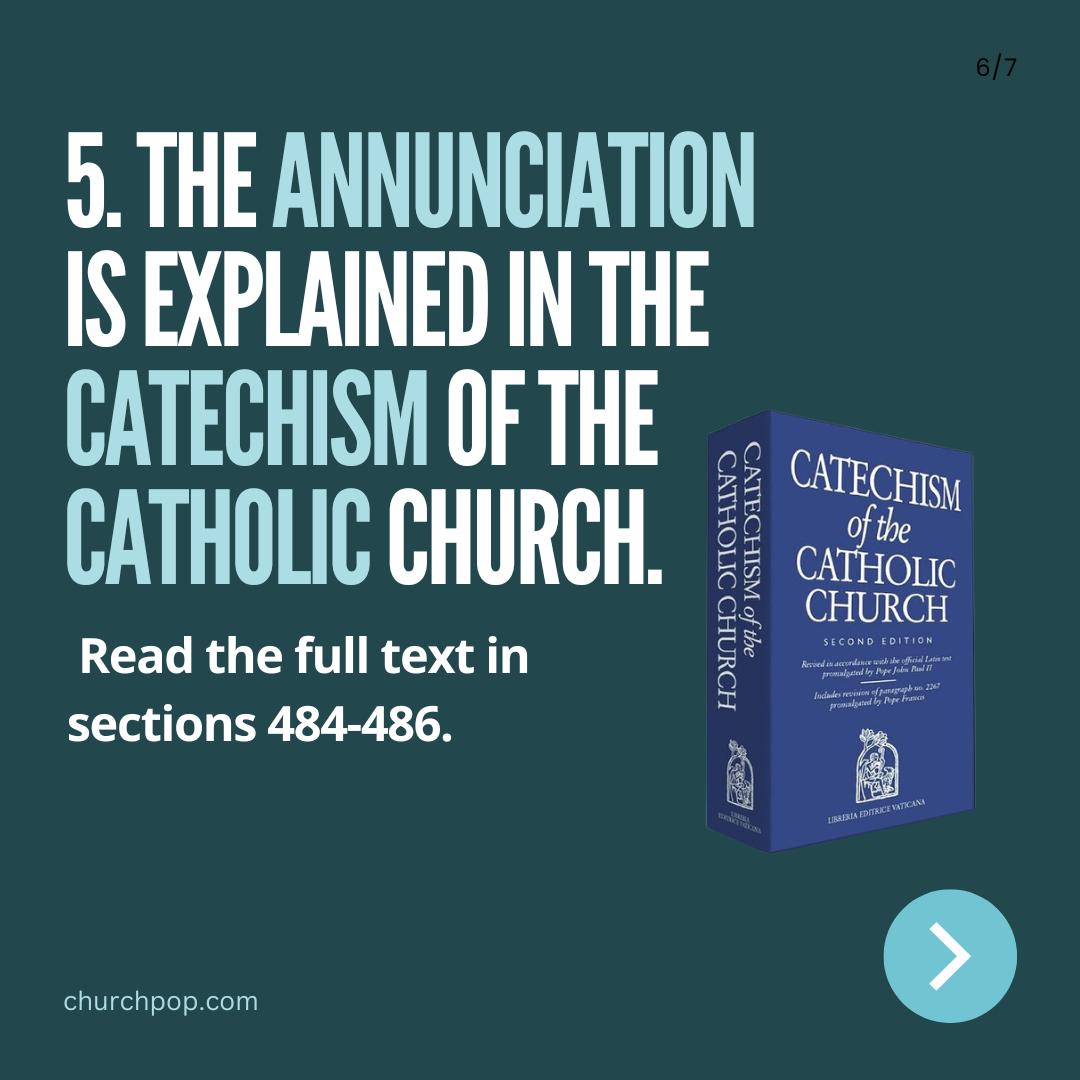
Here is the full text found in the Catechism:
“The Annunciation to Mary inaugurates ‘the fullness of time,’ the time of the fulfillment of God’s promises and preparations. Mary was invited to conceive him in whom the ‘whole fullness of deity’ would dwell ‘bodily.’ The divine response to her question, ‘How can this be, since I know not man?,’ was given by the power of the Spirit: ‘The Holy Spirit will come upon you.'”
“The mission of the Holy Spirit is always conjoined and ordered to that of the Son. The Holy Spirit, ‘the Lord, the giver of Life,’ is sent to sanctify the womb of the Virgin Mary and divinely fecundate it, causing her to conceive the eternal Son of the Father in a humanity drawn from her own.
“The Father’s only Son, conceived as man in the womb of the Virgin Mary, is ‘Christ,’ that is to say, anointed by the Holy Spirit, from the beginning of his human existence, though the manifestation of this fact takes place only progressively: to the shepherds, to the magi, to John the Baptist, to the disciples. Thus the whole life of Jesus Christ will make manifest ‘how God anointed Jesus of Nazareth with the Holy Spirit and with power.”‘
(Catechism of the Catholic Church, 484-486)
6) The saints often reflected on this event in God’s plan for humanity.

Here are a few quotes:
“[H]aving lifted up one woman by preserving her from sin, and then having her freely ratify that gift at the Annunciation, God gave hope to our disturbed, neurotic, gauche, and weak humanity.” – Ven. Fulton Sheen
“The Virgin did not merely pronounce her fiat; in every moment she fulfilled that firm and irrevocable decision. So should we.” – St. Josemaria Escriva
“[A]t the Annunciation Mary entrusted herself to God completely, with the ‘full submission of intellect and will,’ manifesting ‘the obedience of faith’ to him who spoke to her through his messenger. She responded, therefore, with all her human and feminine ‘I,’ and this response of faith included both perfect cooperation with ‘the grace of God that precedes and assists’ and perfect openness to the action of the Holy Spirit, who ‘constantly brings faith to completion by his gifts.’” – St. John Paul II
Follow ChurchPOP:
Telegram Channel
Truth Social
GETTR
Gab
Parler
Signal Group
WhatsApp Group 1
WhatsApp Group 2
ChurchPOP Facebook Group
Email List
[See also: Where the Angel Gabriel Appeared to Mary: Inside the Magnificent Basilica of the Annunciation]
[See also: A New Nighttime Examen Based on the Annunciation You Can Try Tonight]


